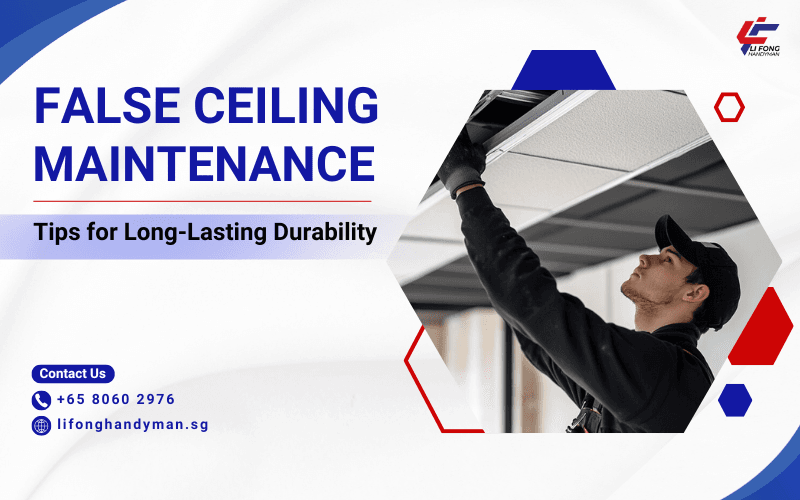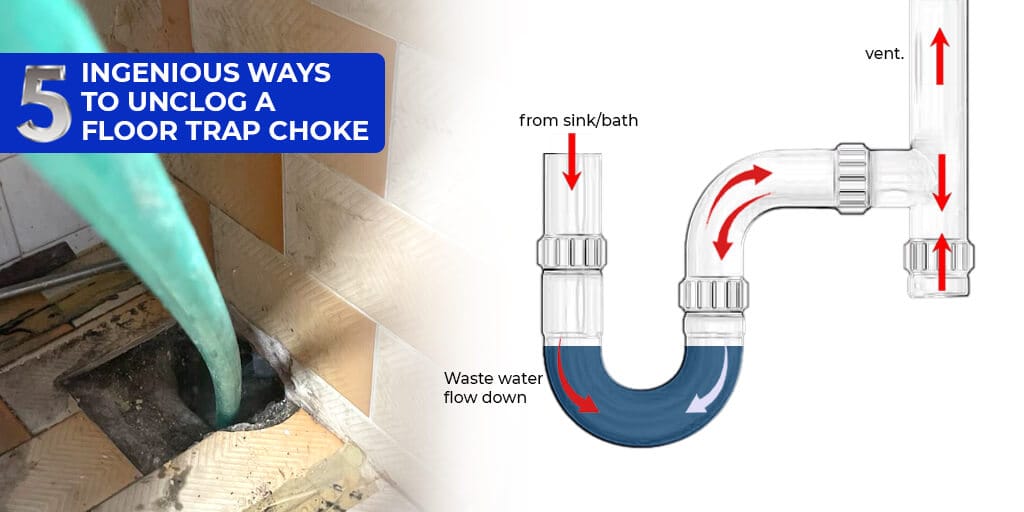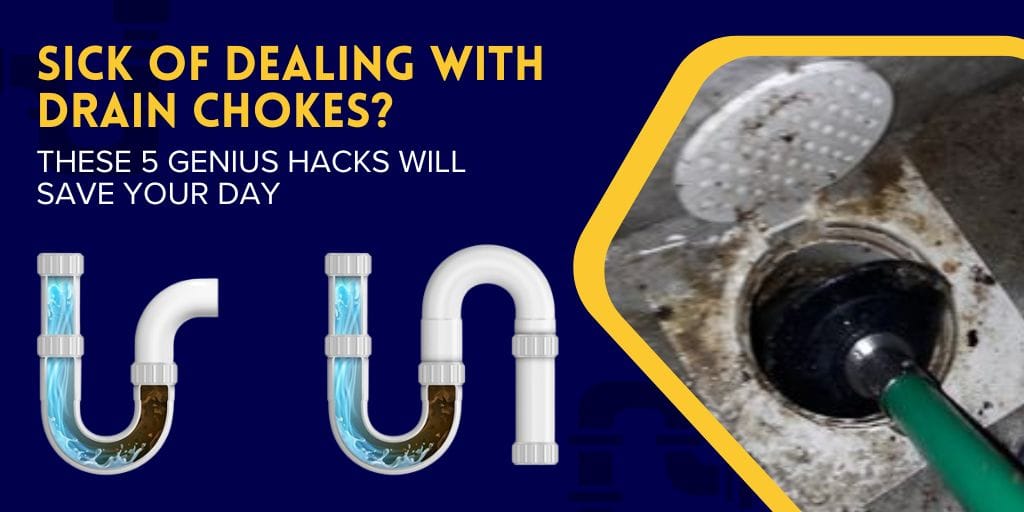In the rainy season, you suddenly wake up early to the sound of raindrops tapping against your window, only to notice a small damp patch on your false ceiling. You feel a sense of dread as you realize this could lead to bigger issues, like water damage, if left untreated. A few weeks later, you’re worried about the ceiling sagging.
It’s an all-too-common problem many Singaporeans face—humidity and moisture damage can quickly ruin the beauty of your ceiling. But don’t worry! With the right maintenance routine, you can avoid such issues and extend the life of your false ceiling.
Let’s dive into some effective tips to help keep your ceiling in top shape for years to come.
False Ceiling Maintenance Tips for Long-Lasting Durability
By understanding the types of materials, common issues, and the best ways to care for them, you can avoid costly repairs and enjoy a well-maintained ceiling.
1. Regular Cleaning and Dust Removal
One of the easiest ways to maintain your false ceiling is through regular cleaning and dust removal. To effectively clean your ceiling:
- Remove Dust and Cobwebs: Use a soft cloth or microfiber duster to gently remove dust and cobwebs. Avoid using abrasive brushes that could scratch the ceiling surface.
- Best Cleaning Materials and Techniques: For general cleaning, use a damp cloth with water. Avoid soaking the fabric to prevent moisture damage. For gypsum false ceilings, opt for a mild soap solution if needed.
- Spot Cleaning Stains: If you notice stains, use a non-abrasive cleaner. Dab the stain gently with a cloth soaked in the cleaner, making sure not to damage the finish.
- Avoid Harsh Chemicals: Strong chemicals and abrasive cleaning materials can cause discoloration and damage to the false ceiling boards. Stick to mild detergents and cleaning solutions.
By maintaining a routine cleaning schedule, you’ll prevent the accumulation of dirt that can lead to long-term damage.
2. Moisture Control and Prevention
Living in Singapore means facing high humidity, and moisture control is crucial when it comes to false ceiling maintenance. Here’s how you can keep moisture under control:
- Prevent Water Leaks: Inspect the ceiling regularly for signs of water damage. Leaks from roofs or pipes can cause serious damage to the ceiling, leading to sagging and staining. Ensure that your plumbing and roofing are well-maintained to avoid water infiltration.
- Manage Humidity in High-Moisture Areas: Kitchens and bathrooms are especially vulnerable to high moisture levels. Install exhaust fans to promote airflow and reduce humidity buildup in these areas.
- Mold and Mildew Prevention: To prevent mold and mildew growth, regularly clean areas that tend to get damp. If you notice any signs of mold, use a specialized cleaner to treat the affected areas. In extreme cases, it might be necessary to replace affected panels.
By managing moisture and ensuring proper ventilation, you can protect your false ceiling from moisture-related problems that could be costly to repair.
3. Inspection and Repair
Regular inspection of your false ceiling is essential for spotting issues early before they become larger problems. Identifying cracks, sagging, or discoloration early can save you money and time in the long run.
- How Often to Inspect: Aim to inspect your ceiling every 6 to 12 months. Check areas that are more likely to be affected by water leaks, such as near windows, pipes, and ceilings exposed to the elements.
- Identifying Issues: Cracks, holes, or discoloration may indicate that your ceiling needs repairs. If the ceiling is sagging, it may be a sign that the support structure is weakened.
- Quick Fixes for Minor Damage: For small cracks or holes, you can apply filler or patch the area with the appropriate materials. However, if the damage is extensive or the ceiling is sagging significantly, it’s best to call a professional to avoid further issues.
Early detection and swift action can help you avoid expensive repairs and maintain the integrity of your false ceiling.
4. Maintenance of Integrated Fixtures
False ceilings often have integrated fixtures like lights, fans, or air conditioning units. These fixtures need regular maintenance to ensure they continue functioning properly and don’t cause damage to the ceiling.
- Cleaning and Maintaining Ceiling Lights and Fans: Dust and dirt can accumulate on lights and fans over time, leading to inefficient performance. Turn off the power and clean fixtures with a dry cloth to remove dust.
- Ensuring Proper Electrical Safety: Regularly inspect the wiring of ceiling lights and fans for any signs of wear or exposed wires. This will help avoid electrical hazards and prevent fire risks.
- Checking for Loose Fittings: Ensure that all ceiling fixtures are securely fastened. Loose fittings can cause damage to the ceiling structure over time, leading to unnecessary repairs.
By maintaining your integrated fixtures, you ensure that they don’t become a source of additional stress or damage to your false ceiling.
5. Professional Maintenance and Repairs
While DIY maintenance can be helpful for minor issues, there comes a time when you should seek professional assistance. False ceiling repairs can be complex, and hiring a professional ensures the job is done correctly and safely.
- When to Seek Professional Help: If you notice significant sagging, large cracks, or water damage, it’s best to hire an expert.
- Best Practices for Extending Lifespan: Professionals can also provide guidance on the best materials for your false ceiling, ensuring it is durable and easy to maintain.
- Cost-Effective Maintenance Solutions: While professional help may seem costly, it can save you money in the long run by preventing further damage and ensuring proper repairs.
Professional maintenance ensures that your false ceiling remains in top condition, extending its lifespan and functionality. Whether you’re dealing with water stains, sagging panels, or electrical issues with integrated lighting, expert help can make all the difference. If you’re looking for reliable and skilled assistance, our false ceiling contractor services in Singapore are here to help with inspection, repair, and long-term maintenance solutions.
Conclusion
For many Singaporeans, dealing with humidity and moisture can often feel like a never-ending challenge, especially when it comes to home maintenance. That small water stain on your false ceiling may seem like a minor issue at first, but if left unchecked, it could escalate into a major problem, causing damage and costing more to repair.
It’s time to allow yourself peace of mind and a home that looks its best for years to come.
Contact us now and grab the opportunity to get the best maintenance for your false ceiling.
FAQs
1. Does a false ceiling require maintenance?
Yes, Regular cleaning, inspections, and repairs will help extend the lifespan of your ceiling.
2. What are the problems with false ceilings?
Cracking, sagging, water damage, and mold growth.
3. What is the life of a false ceiling?
The lifespan of a false ceiling can range from 10 to 15 years, depending on the materials used and the level of maintenance.
4. How to clean a false gypsum ceiling?
To clean gypsum false ceilings, use a soft cloth or microfiber duster to remove dust. For stains, use a mild detergent with water. Avoid harsh chemicals to prevent damage to the surface.


